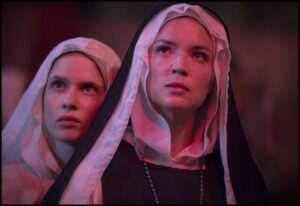Halloween is, sincerely, one of best times of the year. There’s candy, there are costumes, and maybe most importantly, everyone who doesn’t normally want to watch horror movies suddenly wants to watch horror movies.
Last year, Polygon introduced the Halloween Countdown, offering a daily Halloween-friendly movie or TV show to stream each evening. (So if you need 31 things to watch ASAP, check out our previous month of horror recommendations.) This year we continue that tradition, with the Polygon staff once again sharing its favorite spine-tingling streamables.
Every day through the month of October, we’ll add a new recommendation to the Countdown and tell you wear you can watch it. From perennial horror classics to new-school contemporary frights, chilling television shows and Halloween specials, YouTube creepypasta series and terrifying short films, we’ve assembled a list of the very best horror that streaming has to offer. So curl up on the couch, dim the lights, and ready yourself for a terrifying and entertaining host of Halloween surprises. Check back each day for a new thing to watch.
Oct. 1: Cure (1997)
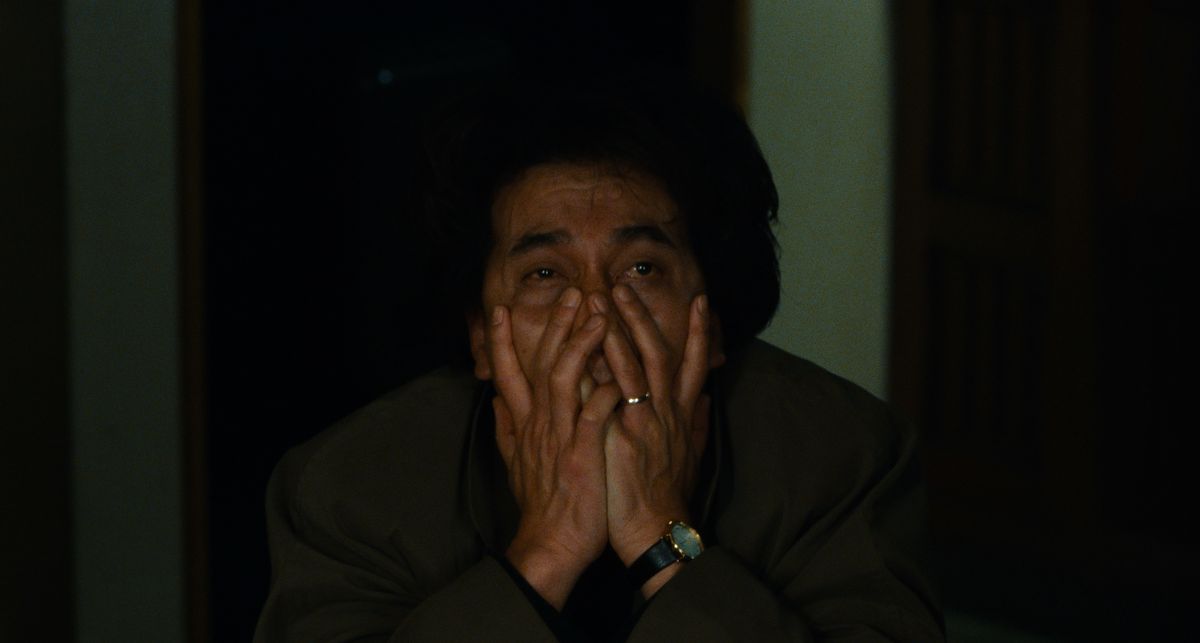
A Japanese detective named Takabe finds himself in the middle of a seemingly unsolvable case in Kiyoshi Kurosawa’s 1997 horror masterpiece Cure. The case involves a string of unrelated victims whose bodies are found with the letter X cut from their throat to their torso. In each separate case, the murderer is found nearby with no memory of the murder, or even a hint of what could have motivated them, leaving Takabe no closer to how these are all connected. Takabe’s partner, a psychiatrist, jokes that maybe the devil made them do it. But Kurosawa’s never gives us the comfort of blaming the supernatural, and eventually we meet an enigmatic character who easily belongs in the pantheon of movie murderers right next to Hannibal Lecter.
Much like other Japanese Horror from the late 1990s, Cure is as much — if not more — of a procedural and investigation than it is a horror story. It doesn’t build its brand of horror on scary moments, but where Kurosawa’s mastery of the horror genre really comes through is in the movie’s creeping dread. His direction is still, quiet, and almost emotionless, pulling us slowly into a terrifying and grisly mystery that he makes feel almost real. Amid all this tension, Kurosawa doesn’t even offer a release valve for the ending, instead leaving us with one of the most unsettling climaxes of all time.
There may not be demons or ghosts, but there is enough haunting existential dread to make Cure stick with you like an old nightmare. —Austen Goslin
A 4K restoration of Cure is currently playing in select theaters and is available to stream on Criterion Channel.
Oct. 2: Waxwork (1988)
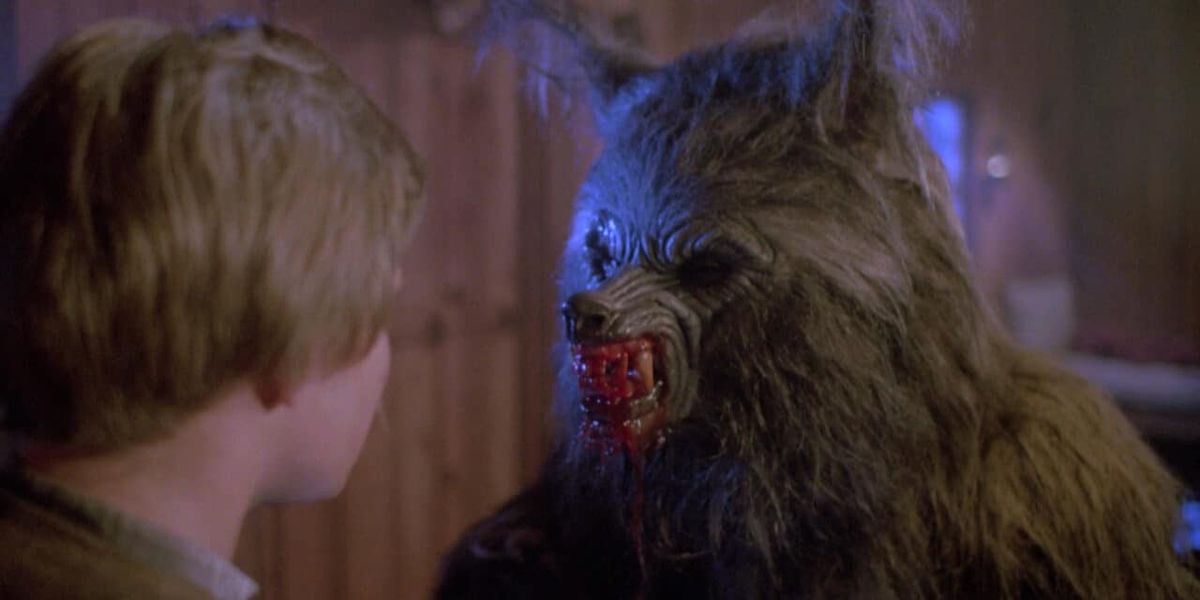
Nobody’s going to be impressed with the technical virtuosity on display in the cheesy 1988 horror movie Waxwork, which looks a bit like it was shot on a series of leftover sets from, alternately, a series of Hammer horror films, and some old Ed Wood productions. The acting is mostly amateurish, and some of the costuming is downright hilarious. Even so, it’s worth watching just for the sheer demented imagination on display, and for some truly wild things you’re unlikely to see in any other horror movie.
When a wax museum abruptly appears in a small suburb that couldn’t possibly support a wax museum, a group of sullen college students gets drawn in, literally. The museum’s horror tableaus, with werewolves, vampires, and more human monsters, are actually pocket dimensions that suck people in to murder them and harvest their souls for nefarious purposes. That plays out as a series of micro horror stories: One is a gasping vampire bodice-ripper that feels like a hilarious re-imaging of Labyrinth, if the Goblin King was keeping prisoners in his kitchen with their legs gnawed off. Another is a surprisingly in-depth venture into kink, with one of the students falling into the hands of the Marquis de Sade, and realizing she enjoys pain and doesn’t want to escape. Keep an eye out for The Avengers’ Patrick Macnee as the inevitable explainer who lays out the actual purpose of all these mini-adventures, and stay tuned for the surprisingly explosive ending. It’s all extremely messy, but executed with passion and more subversive glee than most 1980s horror. —Tasha Robinson
Waxwork is available to stream free with ads on Tubi, or to rent at Amazon or Vudu.
Oct. 3: iZombie (2015)
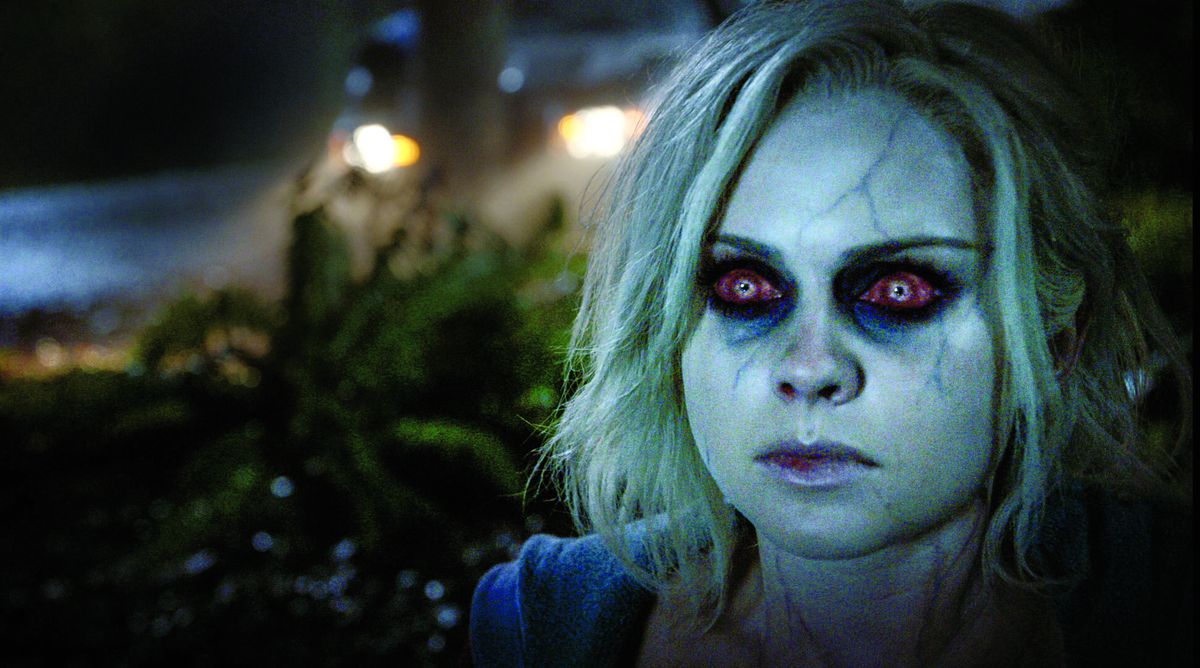
iZombie is the perfect thing to put on when you aren’t sure what type of horror you’re in the mood for, but know you want to have a good time. The zom-dram-rom-com starts with the tried-and-true procedural premise of a straight-laced cop teaming up with an out-of-the-box consultant to solve murders — only in this case, the consultant is a zombie who eats the victims’ brains, thus allowing her to temporarily inherit some of their personality traits and experience flashes of their memories. But much like creator Rob Thomas’ previous cult hit Veronica Mars, the procedural elements are really a Trojan horse designed to get viewers in the door before revealing the show is actually a complex, serialized drama about trauma, oppression, and capitalism. With its off-kilter humor, high-stakes action, and perfect cast, iZombie is a kitchen-sink series with huge risks that (at least mostly) pay off. —Sadie Gennis
iZombie is available to stream on Netflix.
Oct. 4: Blade 2 (2002)
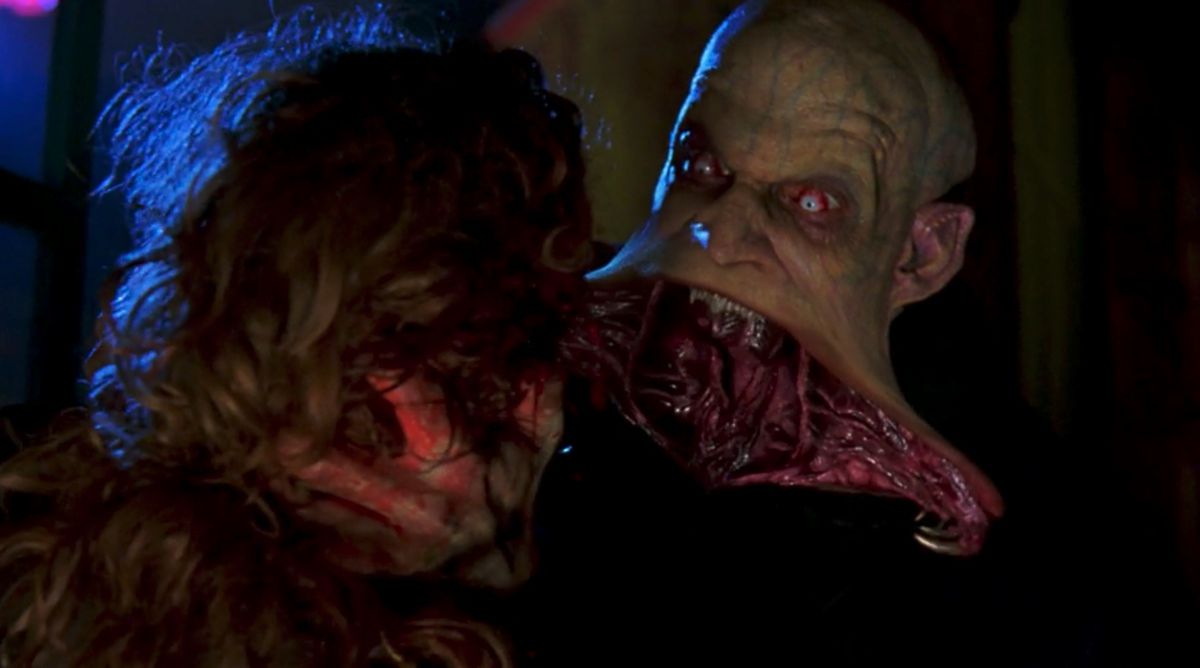
In 1998, Blade awoke the comic book movie from the dead. But its role in paving the way for X-Men, Spider-Man, and the Marvel Cinematic Universe makes the franchise’s horror roots easy to overlook. And, man, Guillermo del Toro’s Blade II is freaky.
After rescuing his mentor Whistler from a vampiric laboratory with strong H.R. Giger vibes, Blade turns his attention to an outbreak of the “reaper” virus. An experiment gone wrong, the mutation transforms the already-terrifying bloodsuckers into ravenous slobbering beasts. The Reapers are unstoppable, and want to kill the general vampire population, leading the underground society’s higher ups to form a truce with Blade. Together they embark on a mission that leads them to subterranean fortresses, nightclubs, and other shadowy interiors primed for superhuman acrobatic combat.
Del Toro, no stranger to horror history and the mechanics of a creature feature, wrings the Blade concept for every drip of cinematic blood. Not only does a still-holds-up CG Blade allow star Wesley Snipes to slash and hack his way though every scenario, but there’s a sustained note of dread no matter how ridiculous or big the action gets. The Reaper’s slithering mouths and Michael Myers-esque commitment to destruction are nightmare fuel, and at times during a recent rewatch, I really wondered how Blade could possibly make it out alive. It’s a movie with real stakes — and not just the ones Blade throws through vampiric hearts. —Matt Patches
Blade 2 is available to stream on HBO Max.
Oct. 5: “The Puppetmaster,” Avatar: The Last Airbender (2005)
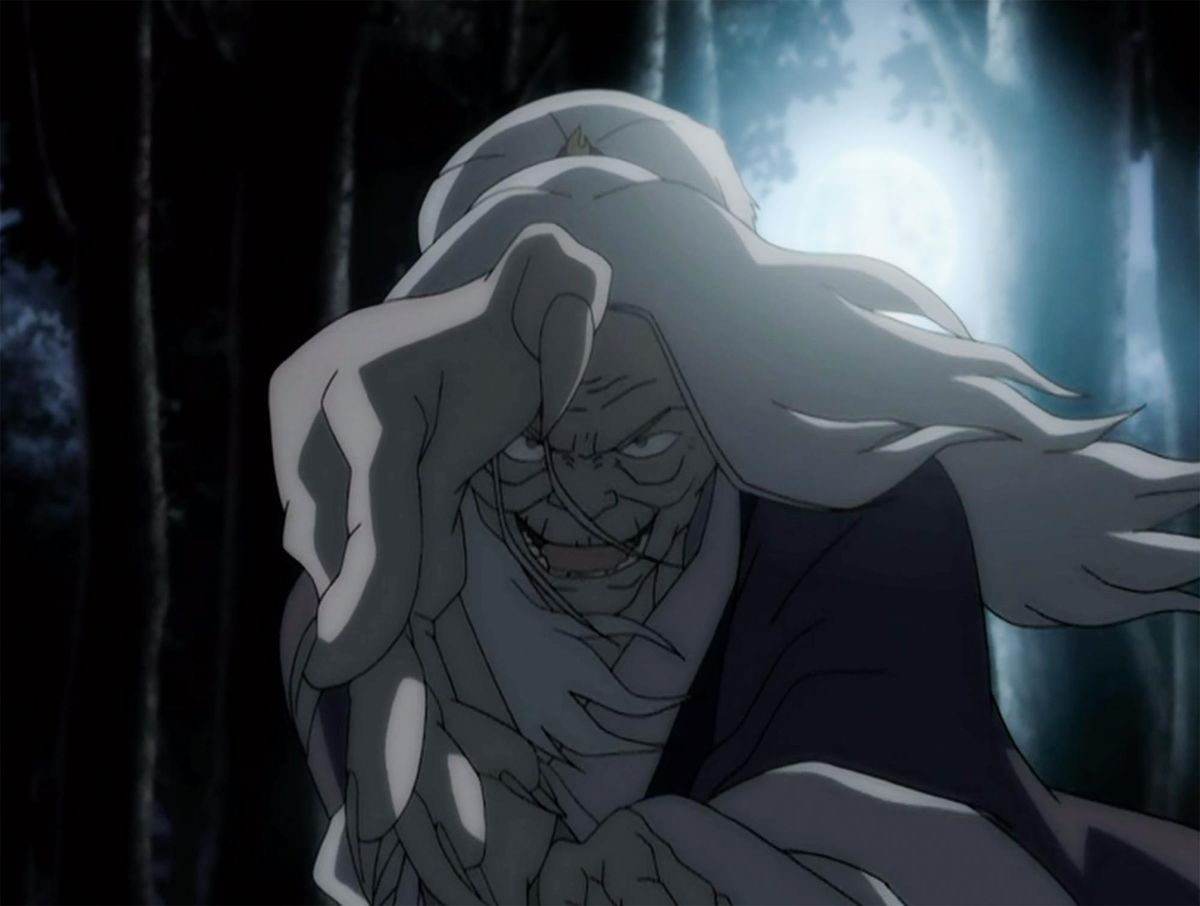
In a packed field, “The Puppetmaster” stands out as one of the best Halloween episodes of children’s animation of all-time. It’s a genuinely scary, moving bit of animation — and in line with the rest of Avatar: The Last Airbender, it tackles serious topics in a way that’s accessible to younger viewers too.
The episode is full of spooky tropes, and even opens with the Team Avatar telling stories around the campfire. The team is undercover, and dressed in Fire Nation attire. They meet Hama, an elderly woman living in the woods, who explains that people from a nearby Fire Nation village have been disappearing. By the end of the episode, we learn that Hama has been kidnapping these villagers by using bloodbending — a technique she developed as a Fire Nation prisoner-of-war, and one she used to escape. On top of this, Katara learns Hama is, like her, one of the sole survivors from the Southern Water Tribe.
“The Puppetmaster” is even stronger because it’s not a one-off. Bloodbending becomes a major plot point in the first season of The Legend of Korra. And Avatar consistently tackles subjects like imperialism and generational trauma — making these topics accessible to children by frequently complicating the idea of who is a “villain.” This is one of many moments, across the show, where the Team Avatar must consider what actual reparations should look like; and what it means to exact revenge on innocent people, instead. —Nicole Clark
Avatar: The Last Airbender is available to stream on Netflix, Amazon Prime Video, and Paramount Plus.
Oct. 6: A Girl Walks Home Alone At Night (2014)
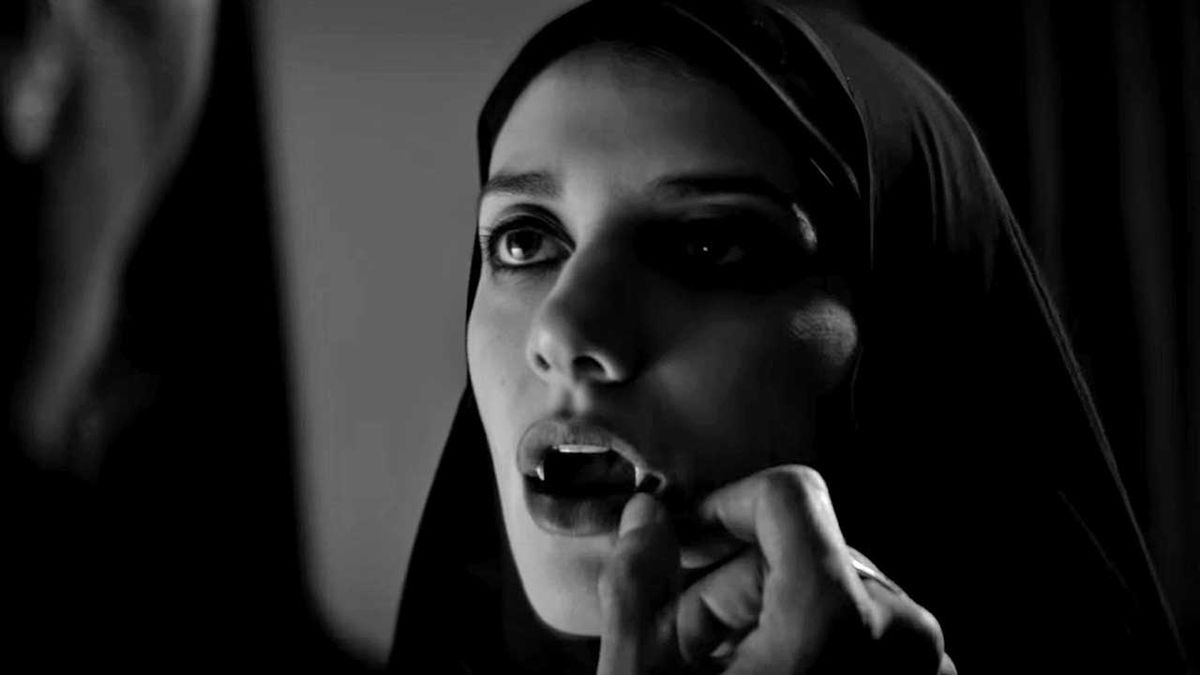
A Girl Walks Home Alone at Night is a spaghetti western vampire story set in Iran and featuring a strong arthouse vibe. The eponymous girl (Sheila Vand) is a chador-wearing skateboarding vampire, in some moments very modern, at others a throwback to old school Nosferatu-style creeps. Writer-director Ana Lily Amirpour’s signature genre-blending style is visible in every choice, from costume to staging to music. Lush despite being in black-and-white, each frame is carefully staged to suck you in and keep you engaged, despite long stretches without dialogue. There is no other horror movie like this movie. —Jenna Stoeber
A Girl Walks Home Alone at Night is available to stream on Shudder and Kanopy with a library card.
Oct. 7: “Summerween,” Gravity Falls (2012)
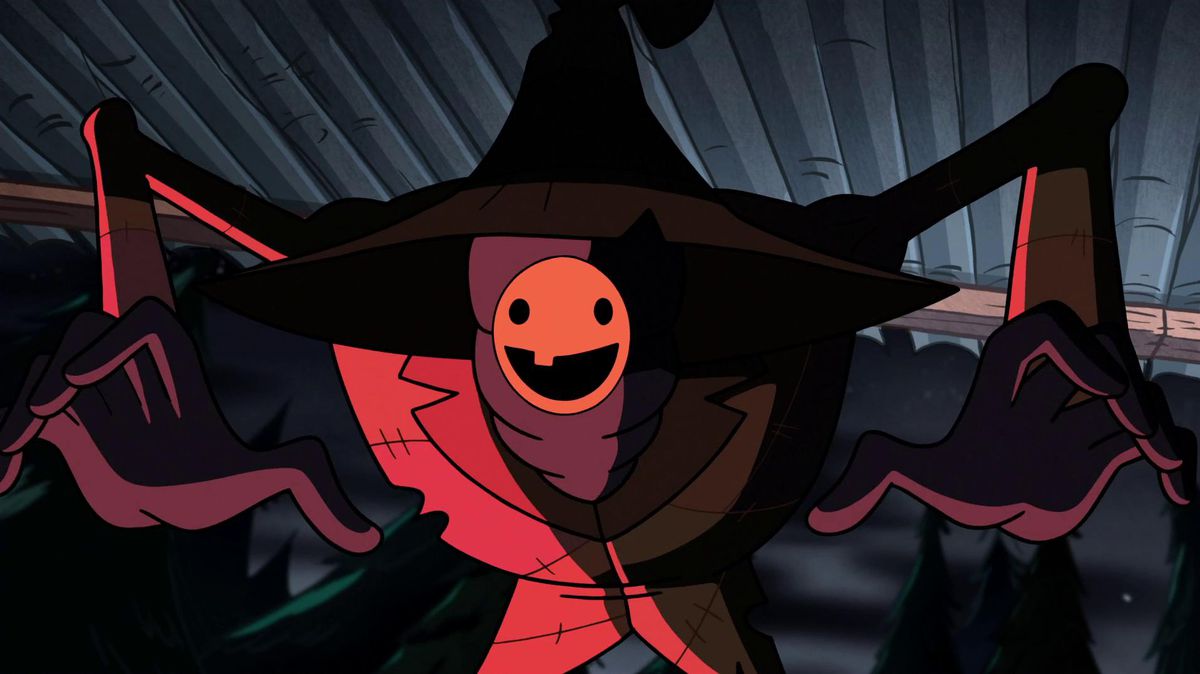
For slight context, Gravity Falls takes place during a summer vacation, where twins Dipper and Mabel go to live with their kooky uncle in a mysterious town. So, there is actually no reason why there is a Halloween episode, except creator Alex Hirsch seemingly just really wanted one, so it exists! In universe, the story is that the town loves Halloween so much that they celebrate it twice a year: once in October and once in June. Summerween is basically identical to Halloween, except instead of Jack-O-Lanterns, they use Jack-O-Melons made out of watermelons.
Despite that quirk, “Summerween” plays out like a standard Halloween episode — Mabel wants to go trick-or-treating, but Dipper wants to impress a girl and go to a teen Halloween party! Oh, also some creepy monster who looks like No-Face from Spirited Away when he’s in feasting-mode has told Dipper, Mabel, and their friends that if they don’t serve him 500 pieces of candy by the time the last Jack-O-Melon goes out, he would consume them. Just Gravity Falls things! “Summerween” manages to be funny and just the right amount of creepy — with some reflection on growing up tied in as well. It’s definitely one of the top-tier all-ages cartoon specials that’ll make you miss the days of trick or treating (and also be thankful that you don’t have to pay tribute to a flesh-eating monster). —Petrana Radulovic
Gravity Falls is available to stream on Disney Plus and Hulu.
Oct. 8: Alien (1979)
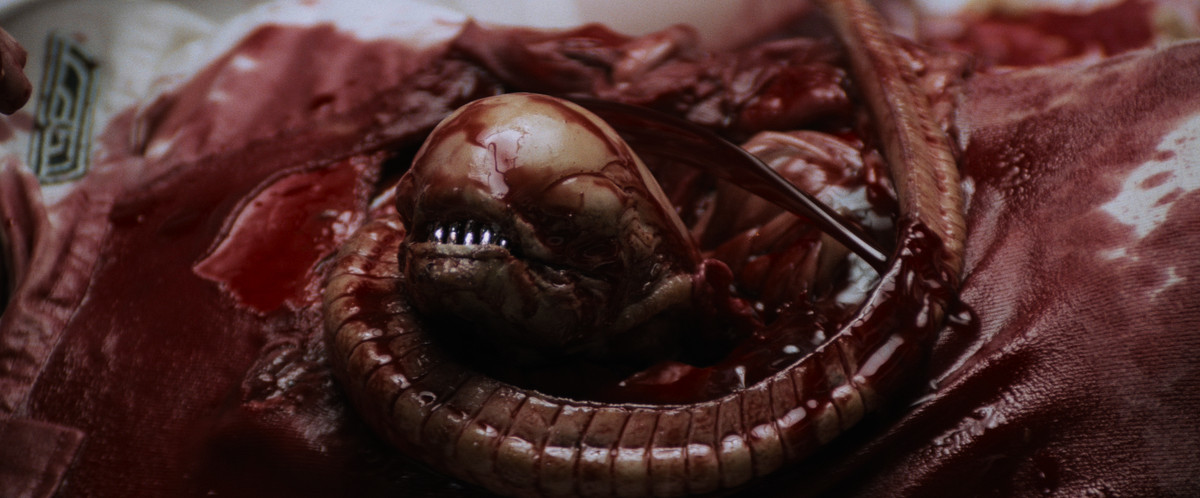
Ridley Scott’s science fiction horror film Alien is full of deliciously tense moments that will inspire you to scream at the screen, “Don’t touch that!” and “Don’t go in there!” While you shout this at characters who cannot hear you, Sigourney Weaver will be echoing your sentiments in her performance as Ripley, an intergalactic trucker with a refreshingly practical attitude about confronting the terrifying alien that overtakes the spaceship Nostromo. As Ripley’s crewmates die in increasingly stressful ways and the alien grows from an unsettling scorpion-like serpent into a towering acid-dripping behemoth, you’ll also get to experience the unique terror of realizing that the alien isn’t really the problem so much as the crew’s unfeeling corporate overlords.
Alien’s greatest and most haunting knife-twist is that human life is considered meaningless in the face of industrial progress and colonization, even if that leads to the discovery of a severe alien threat that could easily demolish all life on Earth. It’s a story that resonates to this day, in no small part because of the devastatingly human portrayals of each of the Nostromo’s crew members. They are just people, working at the behest of a machine that is so much larger and more powerful than they are — and although they observe the oncoming threat, they are not permitted to escape from it.
Except, of course, Ripley escapes. And her cat Jonesy, thank goodness. It would be too heartless otherwise. —Maddy Myers
Alien is available to rent on Amazon, Apple, and Vudu.
Oct. 9: Trick ‘r Treat (2007)
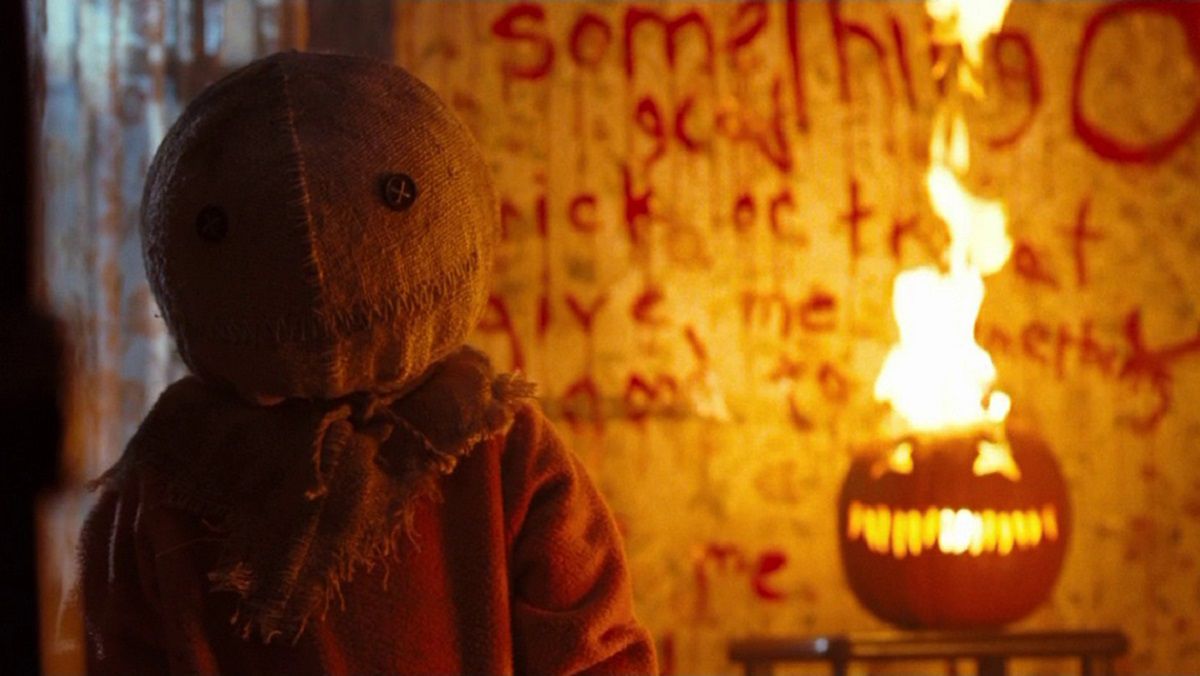
Long before 2012’s V/H/S and ABCs of Death inaugurated a short-lived fad for horror anthologies disguised as movies, 1980s projects like Creepshow and Cat’s Eye created an early mold for that kind of project, stringing film shorts together with thin to nonexistent connections. Caught somewhere in the middle is 2007’s Trick ’r Treat, a largely orphaned project that killed at genre film festivals, but suffered two years of delays before limping out as a direct-to-DVD release. It’s hard to see why: It’s an enjoyably nasty, self-aware series of stories, linked by the small town where they take place, and by a sensibility that’s just demented enough to feel unique.
Dylan Baker stars as a principal who casually murders annoying kids. Anna Paquin shows up as a young woman trying to avoid an annual Halloween rite. Brian Cox plays a cranky neighbor with a dark secret. And in a fourth story, an attempt to take advantage of a scary urban legend goes badly. All four stories melt into each other, with the tone veering between creepy and smirking, to the point where the surprises aren’t in how the stories resolve, so much in how writer-director Michael Dougherty plays with audience expectations, and pulls a reversal every time they get their feet under them. There are a lot of tricks in this movie, and a lot of treats — that isn’t just a cheesy Halloween reference, it’s the visible intended design of this funny, weird, sometimes actually unsettling movie. —Tasha Robinson
Trick ‘r Treat is streaming on HBO Max and can be rented on Amazon or Vudu.
Oct. 10: Werewolves Within (2021)
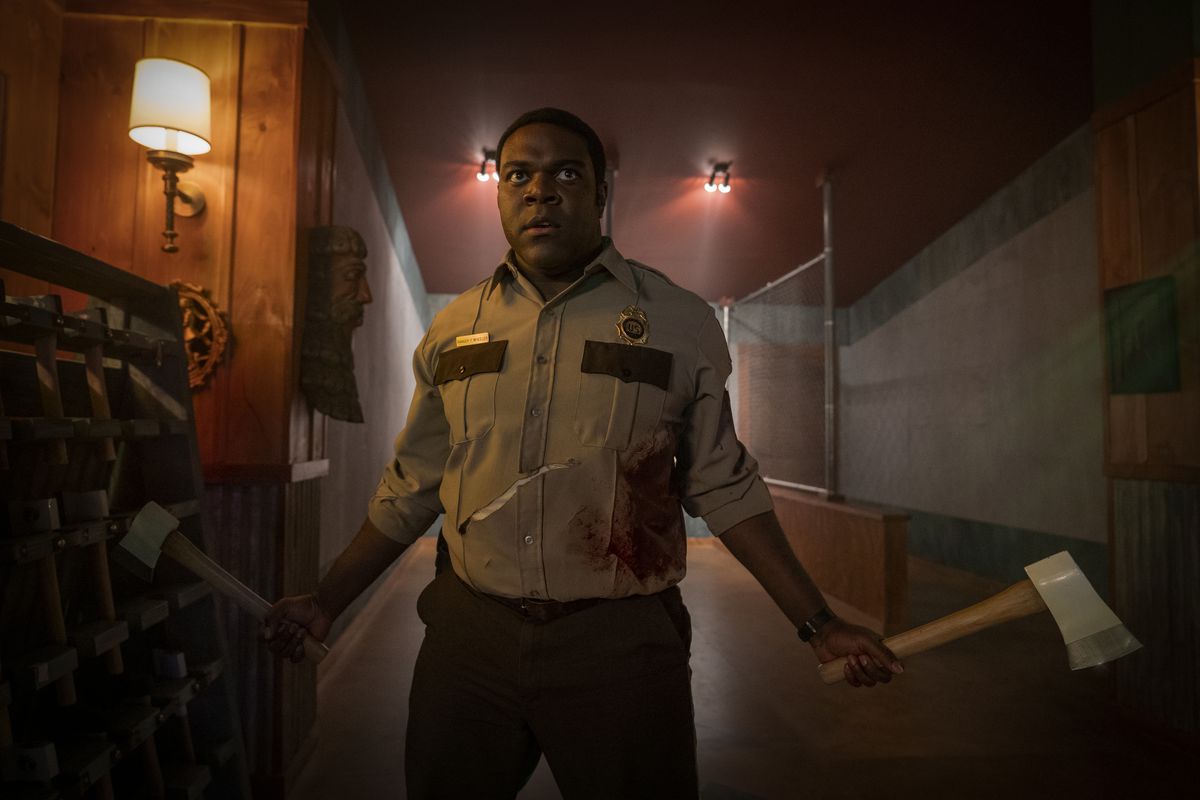
Werewolves Within, from director Josh Ruben and writer Mishna Wolff, is technically a video game adaptation, but you wouldn’t know it from watching. (The wikipedia entry for the game is less than 500 words long, so does it really count?)
We follow Sam Richardson’s forest ranger Finn Wheeler as he’s reassigned to the tiny town of Beaverfield and meets the town’s cast of characters. There’re the sketchy mechanics, the conservative couple, the relocated hipsters, the gruff outdoorsman, and the predatory oilman. Everything promptly goes wrong with an avalanche and a power outage. And then the bodies start showing up.
Werewolves Within becomes a small town murder mystery where everyone is a suspect and everyone has motive. It’s a lot of things — it’s got comedy, suspicion, suspense, and twists. It doesn’t have a whole lot of horror until the third act, though. And that’s fine, because it gives the comedy and the building suspense plenty of room to breathe.
It’s a story about the horrors of a small town, what it means to be a neighbor, and overcoming toxic masculinity. And it includes the incredible line, “Werewolves are real. Women who read Walden while drinking kombucha and getting turned on by your Yellowstone stories, they’re a fantasy.” —Jeffrey Parkin
Werewolves Within is available to rent on Amazon and Apple.
Oct. 11: “Toys in the Attic,” Cowboy Bebop (1998)

Cowboy Bebop is one of the most venerable genre mash-ups in all of anime: a sci-fi neo-noir western drama centered on a rag-tag crew of bounty hunters just trying to get by. “Toys in the Attic,” the eleventh episode in the series, is one of the scant few instances where the show attempts to dabble in outright horror and does so to terrifying effect.
It’s your average day aboard the Bebop. Everyone’s poor, hungry, and there’s absolutely nothing left to eat. To make matters worse, there’s a strange anomalous creature skulking through the rat-teeming crevices and dark corners of the ship, biting and poisoning each of the crew until only Spike Spiegel is left. Arming himself like a commando, Spike sets about hunting this monster and devising an antidote, only to realize in a moment of hunger-induced clarity that this horror, like so many of the ones that plague his waking life, is a consequence of his own errant past.
“Toys in the Attic” is a thrilling and funny homage to Ridley Scott’s Alien and its 1986 sequel Aliens, a bottle episode-style horror fest capped off by an exciting and hilarious conclusion. Whether Netflix’s upcoming live-action remake of Cowboy Bebop will offer its own unique take on this storyline is unclear at this point, but if it does, it’s certainly got a tall act to follow. —Toussaint Egan
Cowboy Bebop is available to stream on Hulu and Funimation.
Oct. 12: House on Haunted Hill (1959)
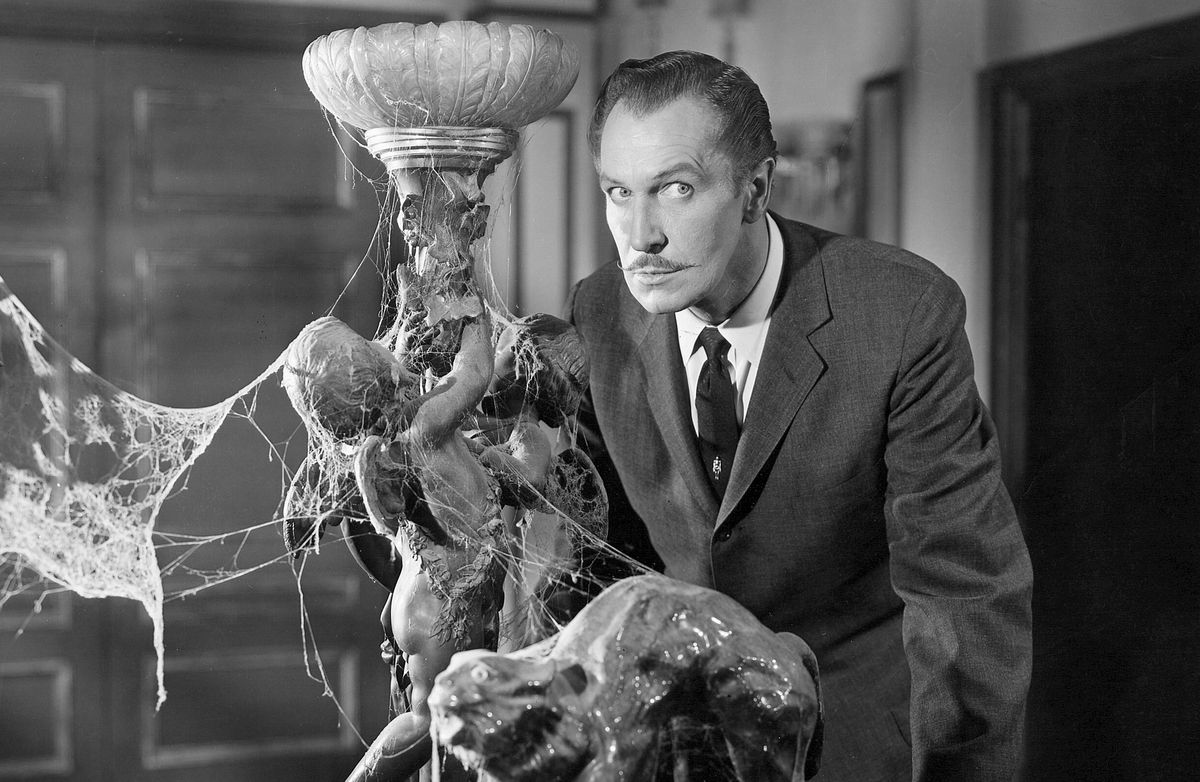
Director William Castle was the king of the gimmick. Though he went on to produce bona fide classics like Rosemary’s Baby, he spent his early days pitching genre pictures to mass audiences through the promise of enhanced, terror-inducing viewing experiences. His film The Tingler screened with “Percepto” buzzer enhancements, which jolted viewers whenever the titular creature popped up. A ticket to 1960’s 13 Ghosts came with Illusion-O Glasses, which revealed hidden specters in the picture.
The twist on 1959’s House on Haunted Hill would be a little bit harder to replicate at home today — during the haunted house movie’s finale, a skeleton swooped over the audience on a zip line. But the truth is, Castle’s fun-forward horror flicks hold up just as well without the accoutrement. With a cast led by Vincent Price, House on Haunted Hill finds a macabre millionaire inviting a number of unsuspecting, money-hungry guests for a night at his haunted mansion rental. If anyone can last the night, they get $10,000. But it’s haunted! Or is it? Castle’s funhouse tricky weaves its way into both plot and execution.
The fun here is all the sight gags on screen. There are ghosts, skeletons, violent hands brandishing weapons, and a basement with its own acid death pit. The old fashioned rat-a-tat dialogue and goofy setups keep House on Haunted Hill as blissfully silly as any straight-faced remake (and, seriously, the remake of this one is bad). It’s also a joy to see Price in action, reminding viewers with each scene why he’s one of the key voices of classic horror. Castle had to hustle to get butts in seats back in the day, but this one’s a no-brainer for any crowd with varying degrees of horror tolerance. —Matt Patches
House on Haunted Hill is available to stream on Amazon Prime Video, and for free with ads on Tubi, Vudu, and Roku.
Oct. 13: Jennifer’s Body (2009)
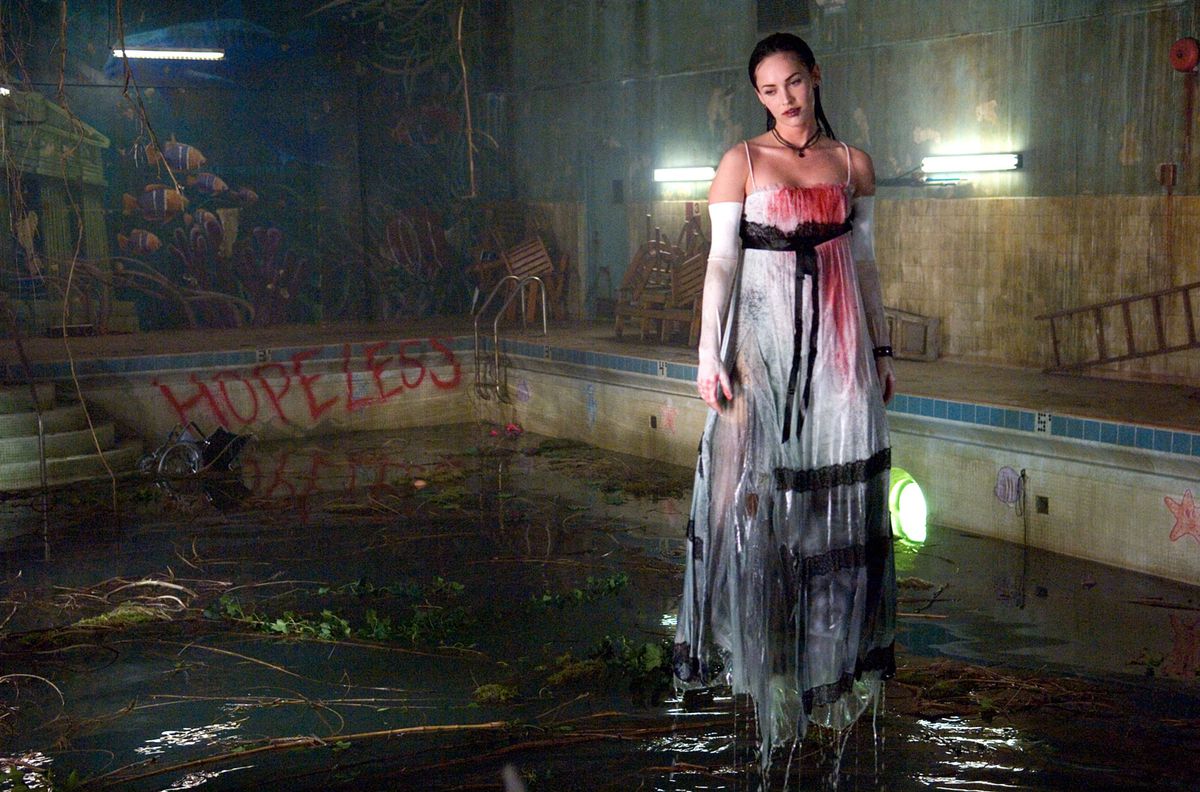
This feminist horror flick was far, far ahead of its time. In it, Megan Fox plays high school student Jennifer who is possessed by a demon, and begins picking off her male classmates. It’s bleakly funny — campy and witty, like screenwriter Diablo Cody’s previous hit Juno, but with gruesome turns that make it a perfect spooky season watch. It captures the complex, toxic high school pseudo-friendship perfectly, with Amanda Seyfried (whose character goes by the incredible, on-the-nose nickname “Needy”) playing Jennifer’s close friend. It’s also Megan Fox’s favorite role she’s ever played.
Jennifer’s Body was initially critically panned, thanks to a publicity campaign that fixated on hypersexualizing Fox — which not only gave the wrong impression of the film, but also ironically played into the exact dynamic the film was meant to critique. The film’s marketing strategy was meant to appeal to the “standard” horror audience of the time, brushing over and alienating the fanbase of young women who have since catapulted the film into cult favorite status. —Nicole Clark
Jennifer’s Body is available to stream on Criterion Channel.
Oct. 14: What We Do In The Shadows (2014)

Vampires might be the most malleable horror-movie monsters. They can be gruesome, sexy, frightening, seductive, sensitive, villains, heroes, even action stars, and occasionally they’re all of these at the same time. But it’s all too rare that vampires get to be funny. Thankfully, we have What We Do In The Shadows to fill that void.
Created by Taika Waititi (Thor: Ragnarok) and Jermaine Clement (one half of Flight of the Conchords), What We Do In The Shadows is a horror-comedy mockumentary about vampire flatmates living their daily lives in New Zealand. They deal with all the things regular people deal with, like paying rent and getting along with each other, along with a host of pretty vampire-specific problems like the unquenchable thirst for human blood and the life-or-death need to stay out of the sun.
As you might expect from the deft hands of Waititi and Clement as the co-writers and co-directors of the movie, What We Do In The Shadows is extremely funny, but it’s not exactly a vampire parody. The movie uses vampirism more like a sitcom setting. There are plenty of great vampire in-jokes, but what makes the movie special is its fantastic characters, who each have their own real world eccentricities and anxieties … they just also happen to be immortal gothic vampires too. If you’re familiar with the FX TV spinoff, watching the original is a must. —Austen Goslin
What We Do In The Shadows can be streamed with a library card on Kanopy, or rented on Amazon Prime Video.
Oct. 15: You (2018)
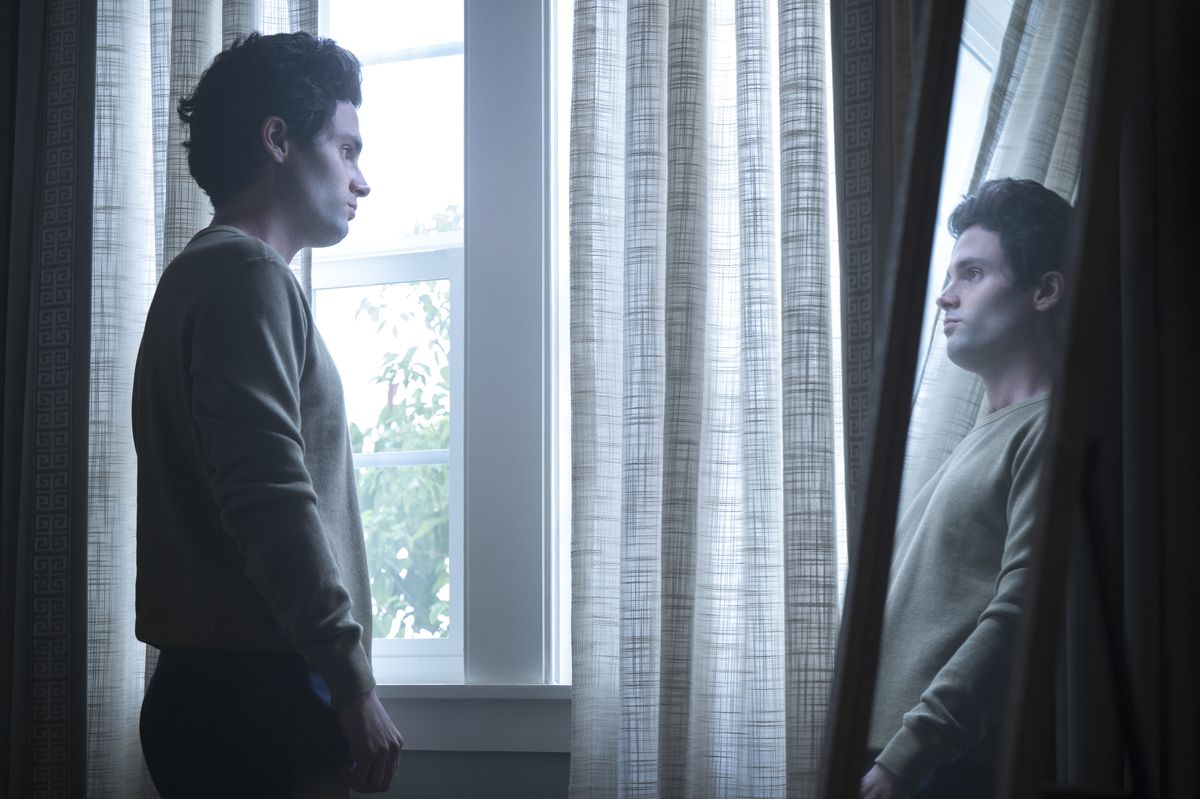
You stars Penn Badgley as Joe Goldberg, a seemingly mild-mannered bookstore manager whose outward charms disguise his true nature. Upon meeting NYU grad Guinevere Beck (Elizabeth Lail), Joe’s obsession with her quickly escalates from online stalking to manipulating her into a relationship to kidnapping and murdering anyone who stands in his way. A taut psychological thriller with a wicked sense of humor, You constantly destabilizes viewers with genuinely unpredictable twists every few episodes. But the one constant throughout it all is Joe’s undeniable villainy. He is not an antihero. He doesn’t have a “code” like Dexter. He is completely unsympathetic, and yet an incredibly compelling protagonist. The series excels at playing with and subverting audience expectations by blending the horrors of thrillers with rom-com beats to create an wildly addictive — and sometimes uncomfortable — watch. —Sadie Gennis
You is available to stream on Netflix.
Oct. 16: Corpse Bride (2005)
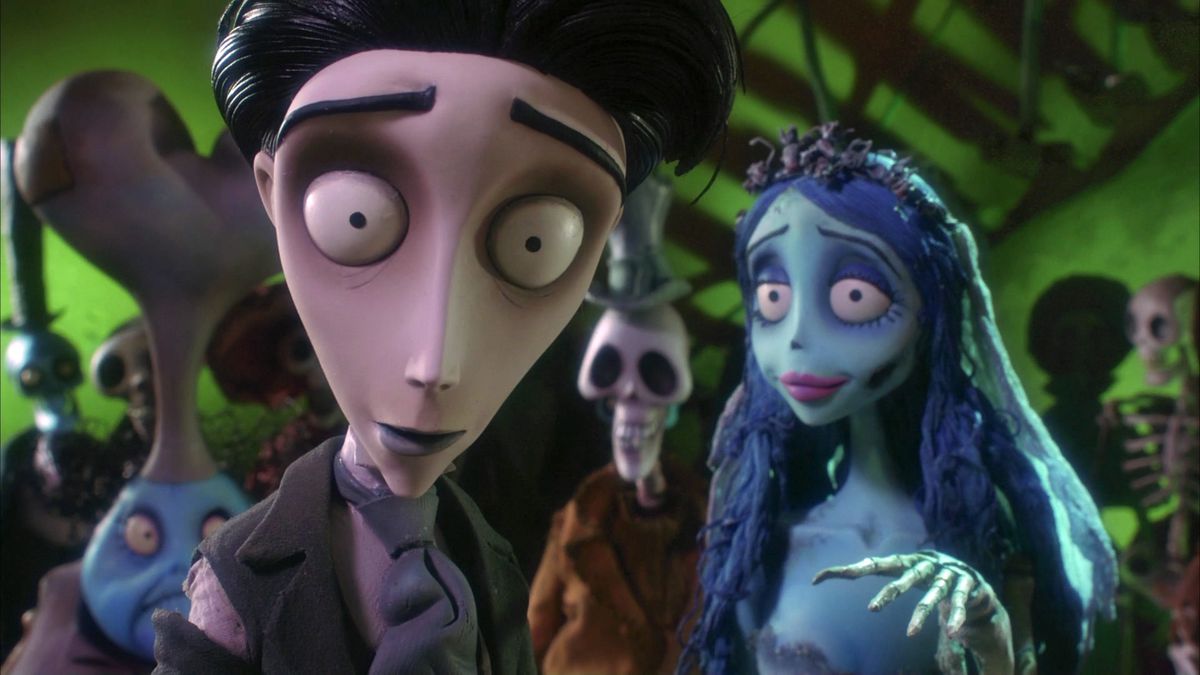
As usual with Tim Burton fare, Corpse Bride imagines the macabre with vibrance, the underworld taking on a more colorful and playful appearance than the dour grey world of the living. It is a Victorian Gothic romance, one where the creepy and macabre aesthetic never really means anything terribly scary or frightening.
Corpse Bride follows awkward and timid Victor Van Dort, engaged to Victoria, a sweet young woman chosen for him by his parents. Though he finds a connection with her, Victor is super nervous about his wedding day and decides to practice his vows on a random branch he finds in a moonlit clearing in the woods — but surprise! That branch is actually the hand of a rotting corpse named Emily, a bride who was killed on her wedding night, who now declares that they are married and whisks him away to the Land of the Dead. Though his heart still belongs to Victoria, Victor begins to see the appeal of Emily’s world, but at the same time, Emily begins to realize that she cannot deny
It is a romance first and foremost, dressed up with Halloween-y scares, spooky supernatural elements, and Tim Burton’s usual Hot Topic aesthetic (I mean this in a very good way). —Petrana Radulovic
Corpse Bride is available to stream on HBO Max.
Oct. 17: Petscop (2017)
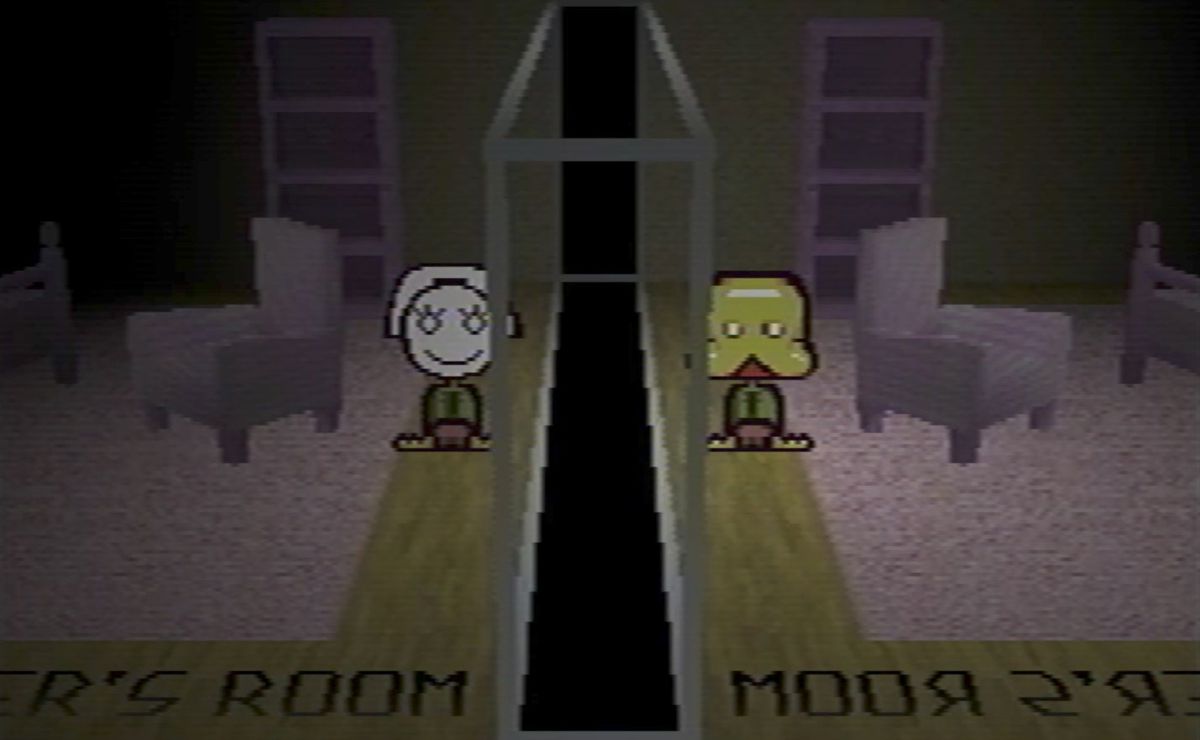
Most creepypastas are text posts recounting a haunted game cartridge or a haunted episode of a popular cartoon. Petscop blows that all away by being an actual video artifact, not just a story. Styled like a Let’s Play series, it follows Paul as he plays an eerie, unfinished PS1 gamed called Petscop. Both Paul and the game are fictitious, a creation of Tony Domenico, but in proper creepypasta fashion, that wasn’t made clear during its initial 2017-2019 run. The series unfolds its mythology slowly, often barely acknowledged. Like many stories about trauma, it’s not about the abuse itself, but the effects; the initial events are obscured, and you only get the shape of them around what’s not talked about.
The total runtime is a little over five hours, with 24 videos (and a soundtrack with a brief epilogue at the end) varying in length from 2 minutes to about a half hour. I would spread it out over a few days rather than trying to binge it. The series benefits from outside explainer videos and articles, and I recommend delving into them eventually. In the meantime, just enjoy Petscop for the weird slow ride it is. —Jenna Stoeber
Petscop is available to stream on YouTube.
Oct. 18: The Orphanage (2007)
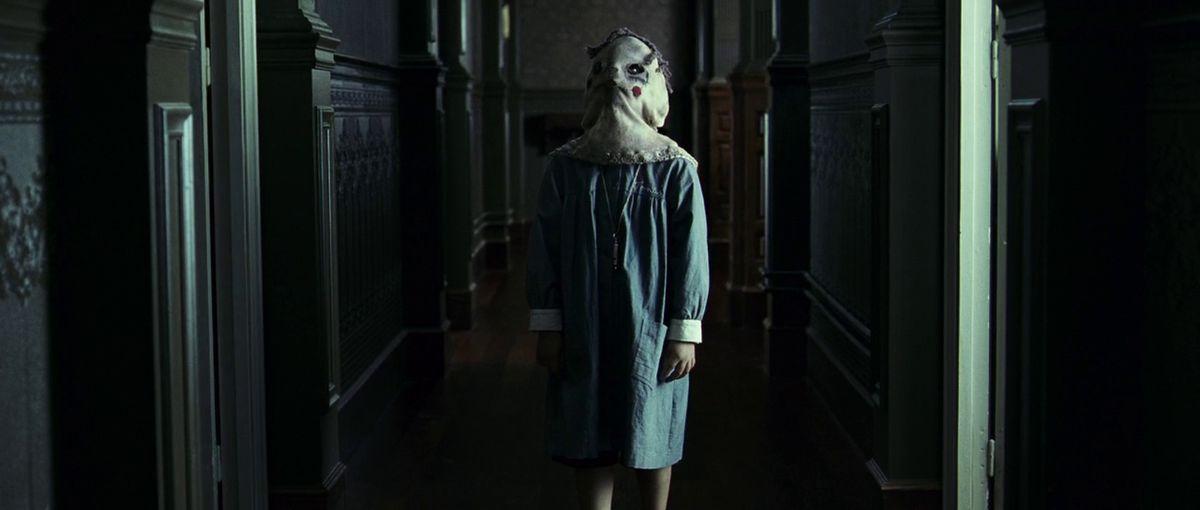
So many modern horror movies these days are either built around cheap jump scares or around slow, creeping tension that doesn’t fully pay off. That’s why we need movies like The Orphanage, to remind us both of what a great jump scare looks like, and that it’s possible to scare the living crap out of an audience and still tell a fantastic story.
Produced by Guillermo del Toro during an era where he seemed to be financing a terrific new director every week, The Orphanage feels a little like del Toro’s own essential 2001 ghost story The Devil’s Backbone. J.A. Bayona’s 2007 directorial debut begins with a woman bringing her family to live in the rural Spanish orphanage where she grew up. She plans to reopen the defunct building as a center for disabled children, but she’s soon troubled by a pair of mysterious figures haunting the place — a weirdly insistent woman, and a child (or possibly “child”) who wears a shapeless bag over his head.
There are a lot of moving parts in The Orphanage — it’s the kind of Gothic mystery that toys with the audience, daring them to figure out for themselves whether it’s a ghost story, a demon story, a mundane thriller where the seeming supernatural elements are just a tease, or something else entirely. But while the end of the movie does definitively and memorably answer that question, the genre doesn’t end up mattering as much as the powerful emotions. This one’s a skillfully made heartbreaker. —Tasha Robinson
The Orphanage is available to stream on Starz and to rent on Amazon, Apple, and Vudu.
Oct. 19: Yamishibai: Japanese Ghost Stories (2013)
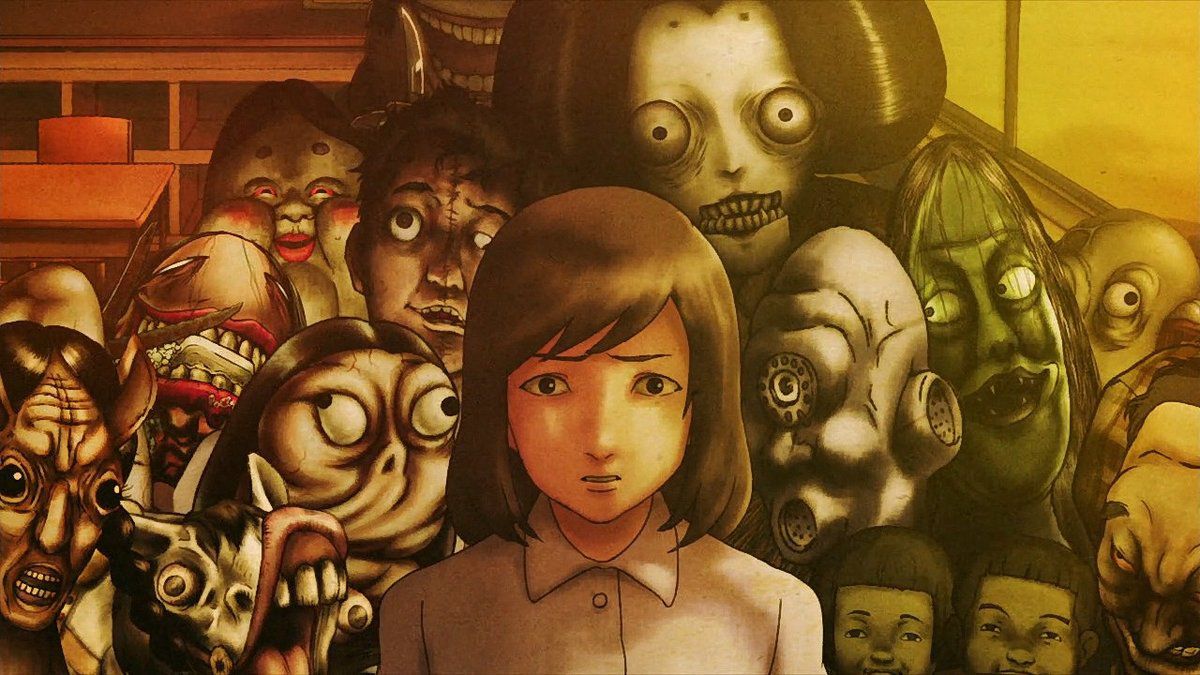
If you’re hankering for an anthology of bite-sized Tales from the Crypt-like stories filled with eccentric ghoulish oddities, an idiosyncratic art style, and more jump scares than you can shake a stick at, Yamishibai: Japanese Ghost Stories will be right up your alley. Directed by Tomoya Takashima and produced by studio ILCA, Yamishibai is a series of animated short horror stories based on Japanese folklore and urban legends. Inspired by the 20th century street theater tradition of “Kamishibai,” each of of the five-minute episodes is depicted in a stylized aesthetic that combined photographic backgrounds and 2D puppet figures that act out each of stories. In keeping with the comparisons to Tales from the Crypt, each story is introduce by “the Storyteller,” a mysteriously masked narrator voiced by Kanji Tsuda (Redline, Michiko & Hatchin).
With over nine seasons of episodes, including a special live-action season that hilariously replicates the look and feel of the original series down to its stop-motion 2D puppet designs, Yamishibai: Japanese Ghost Stories is a delightfully spooky anime anthology series filled with more than enough thrills and chills to entertain your average J-horror fan and then some. —Toussaint Egan
Yamishibai: Japanese Ghost Stories is available to stream on Crunchyroll.
Oct. 20: Army of Darkness (1992)
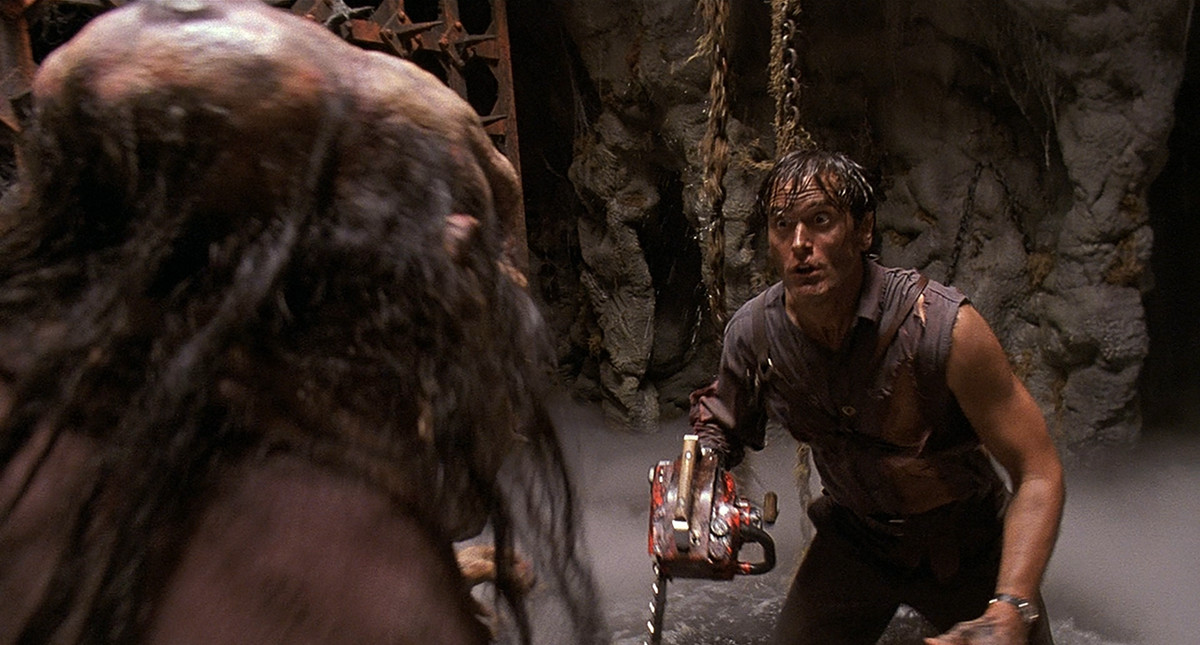
Army of Darkness is the third installment of the Evil Dead trilogy, although when I first saw it, I hadn’t seen any of the previous films. I knew the basic premise just from meeting Ash Williams cosplayers at conventions in my teen years; the character, played by Bruce Campbell, is a one-liner machine who fights zombies with a shotgun and chainsaw. I went into Army of Darkness expecting by-the-books zombie fighting, and I got so much more.
The other Evil Dead movies had comedic moments to offset the scares, but Army of Darkness leans much heavier on the slapstick, barely bothering with thrills or chills. The premise has Ash Williams zipping back in time to the Middle Ages, where he still has to fight the undead, but now he’s in a classic fish-out-of-water situation (the film’s original title was the much more apropos Medieval Dead, but Universal Pictures didn’t go for it).
Army of Darkness continues the series’ tradition of eye-popping practical effects, now featured in impressive historical battles, but the best part of Army of Darkness is the extent to which it lets Bruce Campbell embrace absurdity in both his line delivery and physicality. “This is my boomstick” comes from this film; it’s the first line of Ash’s diatribe about his shotgun to a crowd of confused medieval peasants. Campbell’s charisma carries that moment and so many others (“Nobody said anything about three books”).
The movie’s insistence on pushing horror to the side in favor of sheer goofiness was a risk, though, and perhaps that’s why Army of Darkness is more of a cult classic, even among Evil Dead fans. But if you love it, it’s probably the one you love the best, because there isn’t anything else quite like it. —Maddy Myers
Army of Darkness is available to stream on HBO Max.
Oct. 21: Onibaba (1964)
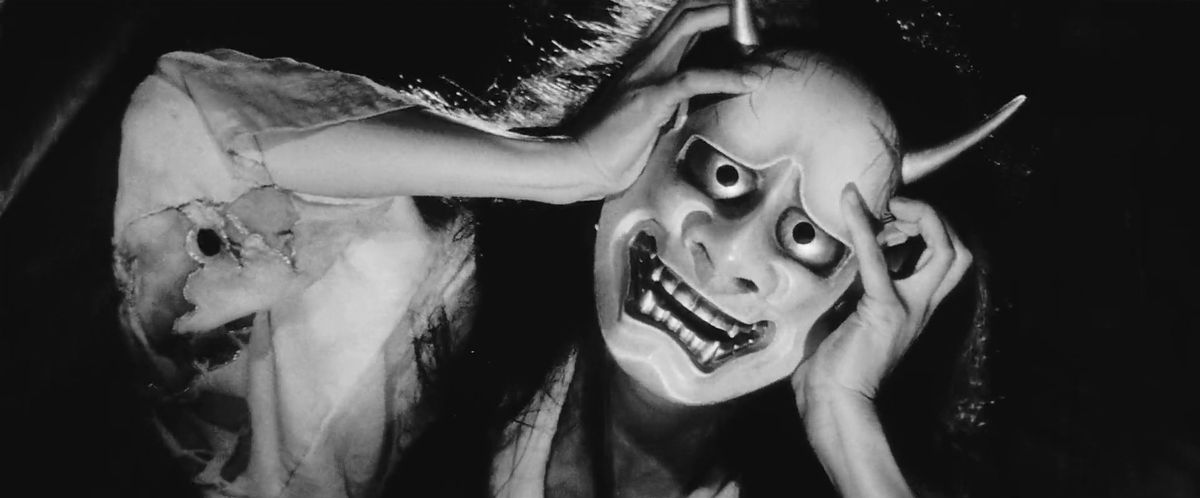
Set in the war-ton Medieval Japan, Kaneto Shindo’s Onibaba centers on the story of an impoverished older woman and her daughter-in-law who, pushed to the brink of starvation and death, survive by murdering wandering samurai and selling their armor for food. When Hachi, the comrade of the older woman’s fallen son Kichi, returns unexpectedly from war and attempts to pursue an affair with Kichi’s widow, the older woman’s resentment and paranoia drives her to extremes in order to convince her daughter-in-law to stay with her.
Shindo’s film is a chilling horror folktale of how desperation, sexual guilt, and hatred can twist people into the worst versions of themselves. With cinematographer Kiyomi Kuroda’s beautifully evocative shots of windswept marshes swaying ominously in the breeze coupled with a thunderous and frenzied score by Hikaru Hayashi, Onibaba isn’t just an excellent spooky movie — it’s an absolute feast for the senses. —Toussaint Egan
Onibaba is available to stream on Criterion Channel.
Oct. 22: Cam (2018) + Host (2020) Double Feature
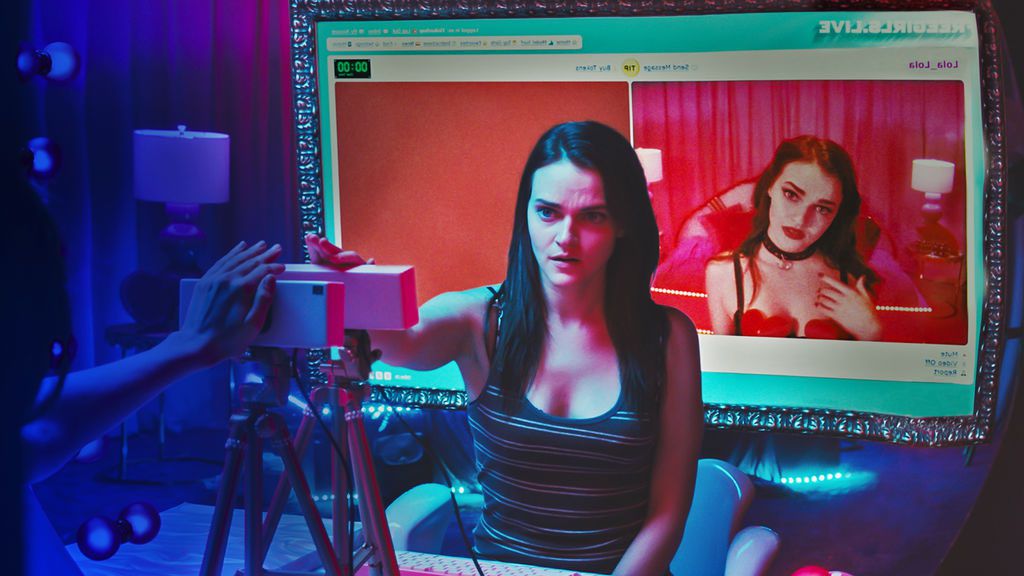
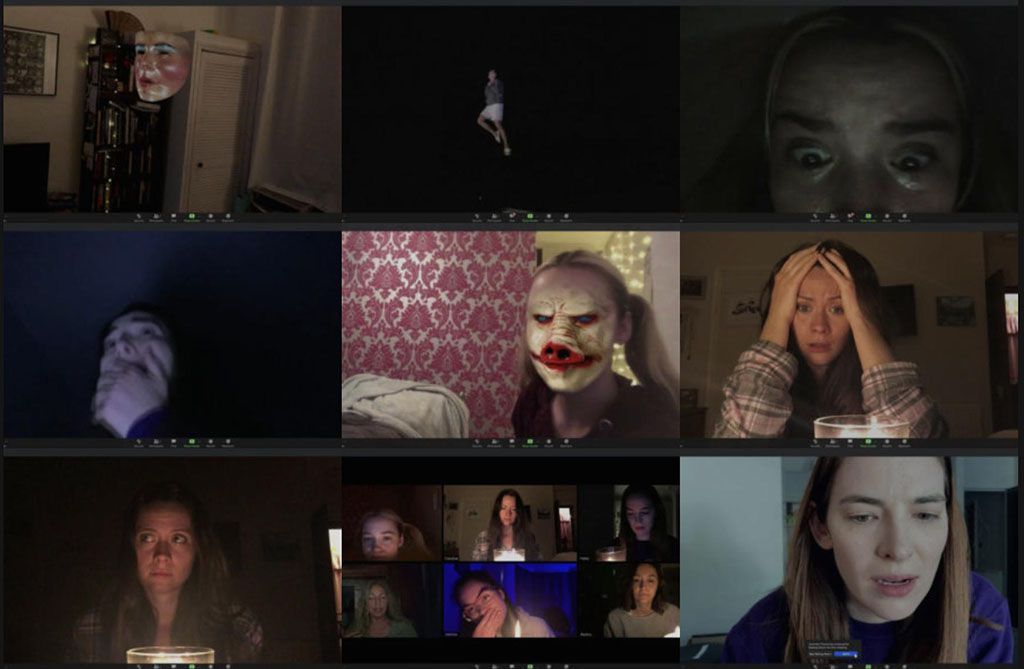
Horror movies have somewhat notoriously struggled with technology. Since the advent of the cell phone, it’s gotten harder to justify getting stranded or not being able to reach help. Others incorporate it only as a tool, perfunctory scenes of people not-googling the answer to the mystery. It takes a particularly savvy creator to understand modern technology-based fears, since we can only barely conceptualize them ourselves. That’s what makes CAM and Host a perfect double-header.
Alice (Maeline Brewer) makes a living as a camgirl, pseudonym Lola, and she’s getting more popular by the moment. But her upward trend is disrupted when someone – or something – begins masquerading as her, on her channel, in her house. Based on writer and producer Isa Mazzei’s own experience doing sex work, Cam avoids the obvious pitfalls of a genre known for punishing sex. The horror of the movie isn’t about the sex work itself; it’s about identity and online performativity and our fundamental lack of control over our digital lives. Given the recent upset regarding OnlyFan’s changing platform strategy, the horror Alice experiences is all the more timely.
Host was written during the pandemic and filmed remotely entirely on Zoom, but you’ll hardly notice any limitations in this exorcism-gone-awry ghost story. It’s deeply clever, playing off familiar aspects of video call technology and not at all skimping on the stunts. Disclaimer: although I loved Host, my partner couldn’t get over the work association they have with the Zoom software. This was enough to keep them from enjoying the movie. You mileage may vary! —Jenna Stoeber
Cam is available to stream on Netflix, Host is available to stream on Shudder.
Oct. 23: Kwaidan (1965)

Welcome to late-stage spooky season. The pumpkin spice lattes have curdled and fallen leaves now clog the gutters. Jump scares and shrieking violins have dulled our nerves so that our brains now crave something different, something unfamiliar, something rich and sumptuous and gruesome. Yes, the cool, dark evenings mean one thing: It’s Kwaidan time.
Kwaidan is more haunting than harrowing. Four ghost stories, cooly stretched across three hours, proceed like a night around the campfire with a master storyteller. You can practically taste the smoke in the air.
The film won the Special Jury Prize at the 1965 Cannes Film Festival and scored an Oscar nomination for Best Foreign Language Film, but please don’t let its artsy pedigree fool you. This is quirky, colorful, and playful horror. The stylized theatrical set, soaked in psychedelic lighting, are stunning and may have inspired the production design of Lady Snowblood and much later, Kill Bill. The stories themselves fall somewhere between classic fables and Scary Stories to Tell in the Dark. And the feeling? There’s nothing quite like it.
Because it’s an anthology, you can enjoy Kwaidan all at once. Or, if you prefer to savor this treat, spread its stories across multiple evenings, like perfectly chilling bedtime stories. —Chris Plante
Kwaidan is available to stream on Criterion Channel.
Oct. 24: Other Side of the Box (2018)
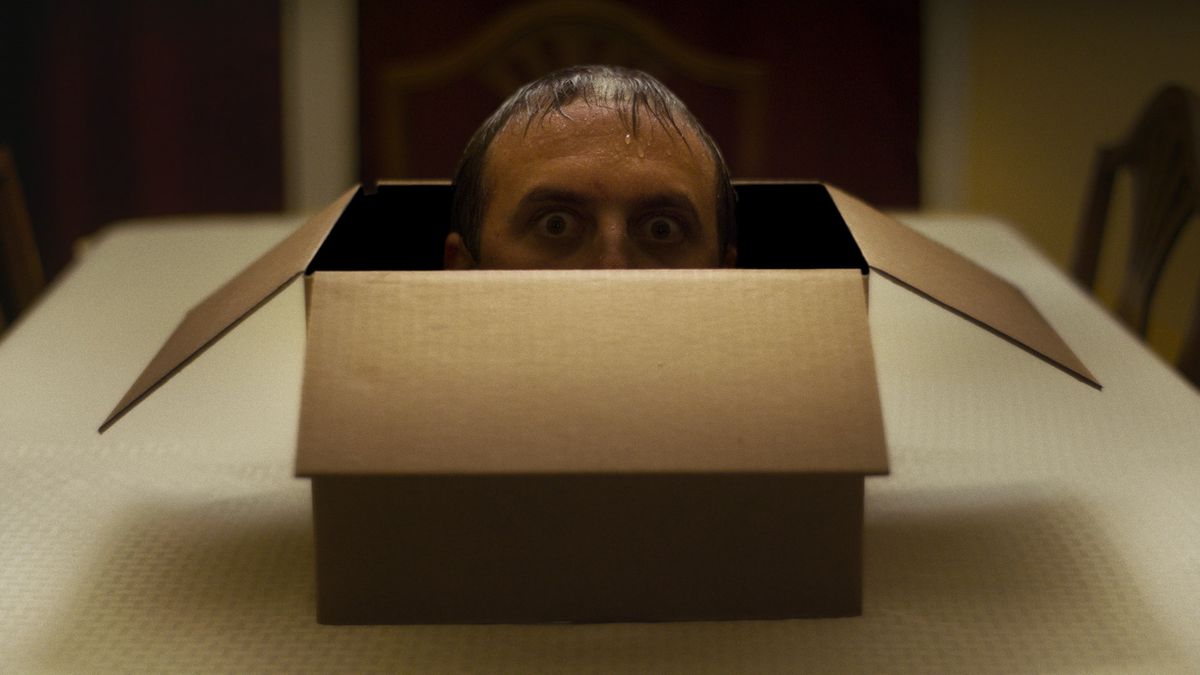
Don’t be fooled by the fact that it’s set around Christmas, Caleb J. Phillips’ 2018 horror short Other Side of the Box is anything but festive. The short opens with Ben and Rachel, a happy couple flirtatiously preparing dinner, only to unexpectedly be visited by an old mutual acquaintance. Things are fine, if a tad awkward at first, until the friend gives the couple a mysterious box as a present before promptly running away. Ben opens the box to find nothing … literally nothing; an impossibly vast and seemingly empty void impenetrable by any form of light. It’s not long before the couple realize that there is something inside the box, and it’s very … wet.
Running at just shy of fifteen minutes, Other Side of the Box is an genuinely unnerving horror short that plays out like a more horrifying version of the Doctor Who episode “Blink.” It’s a short that’ll have you so thoroughly gripped to your seat and glued to your screen, you won’t want to look away — no seriously, don’t look away. —Toussaint Egan
Other Side of the Box is available to stream on YouTube.
Oct. 24: Evil (2019)
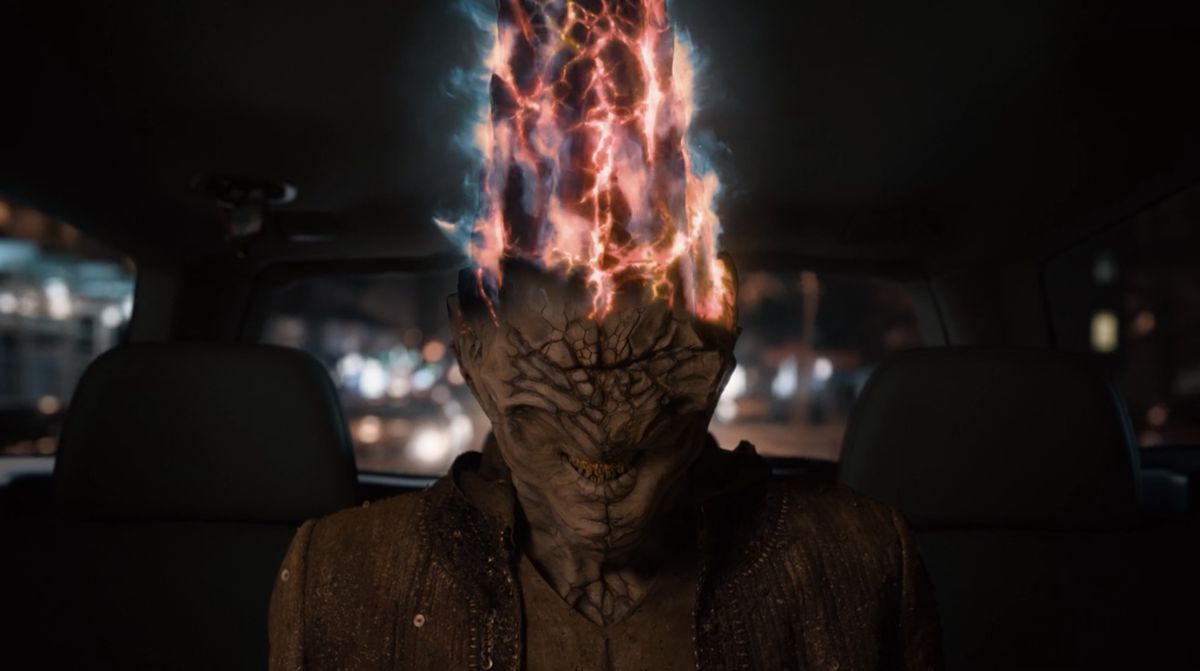
If Law & Order was a horror show, it would look a bit like Evil. There are many things the Paramount Plus series does well, but none of it would come together in such a memorable way if it wasn’t so good at being spooky. The latest series from Robert and Michelle King — the writing team behind acclaimed legal dramas The Good Wife and The Good Fight — Evil follows a team of assessors investigating alleged supernatural events to determine whether or not the Church should get involved. Usually, this means demons.
But Evil is not purely a procedural: It’s also about its characters being haunted. The show always allows just enough room for the frightening possibility that something about the things they investigate might be real — which translates to excellent scares for the audience. With fantastic performances and perhaps the best makeup work on TV, Evil is provocative pop-horror that never forgets how fun it is to scare ourselves, and how absurd our fears can sometimes be. Today is as good a day to get into the show as any, too — Paramount Plus has made one of this season’s best episodes, “S is for Silence,” free to watch without a subscription. —Joshua Rivera
Evil is available to stream on Paramount Plus.
Source: https://www.polygon.com/22702474/best-halloween-movies-tv-to-watch-stream





